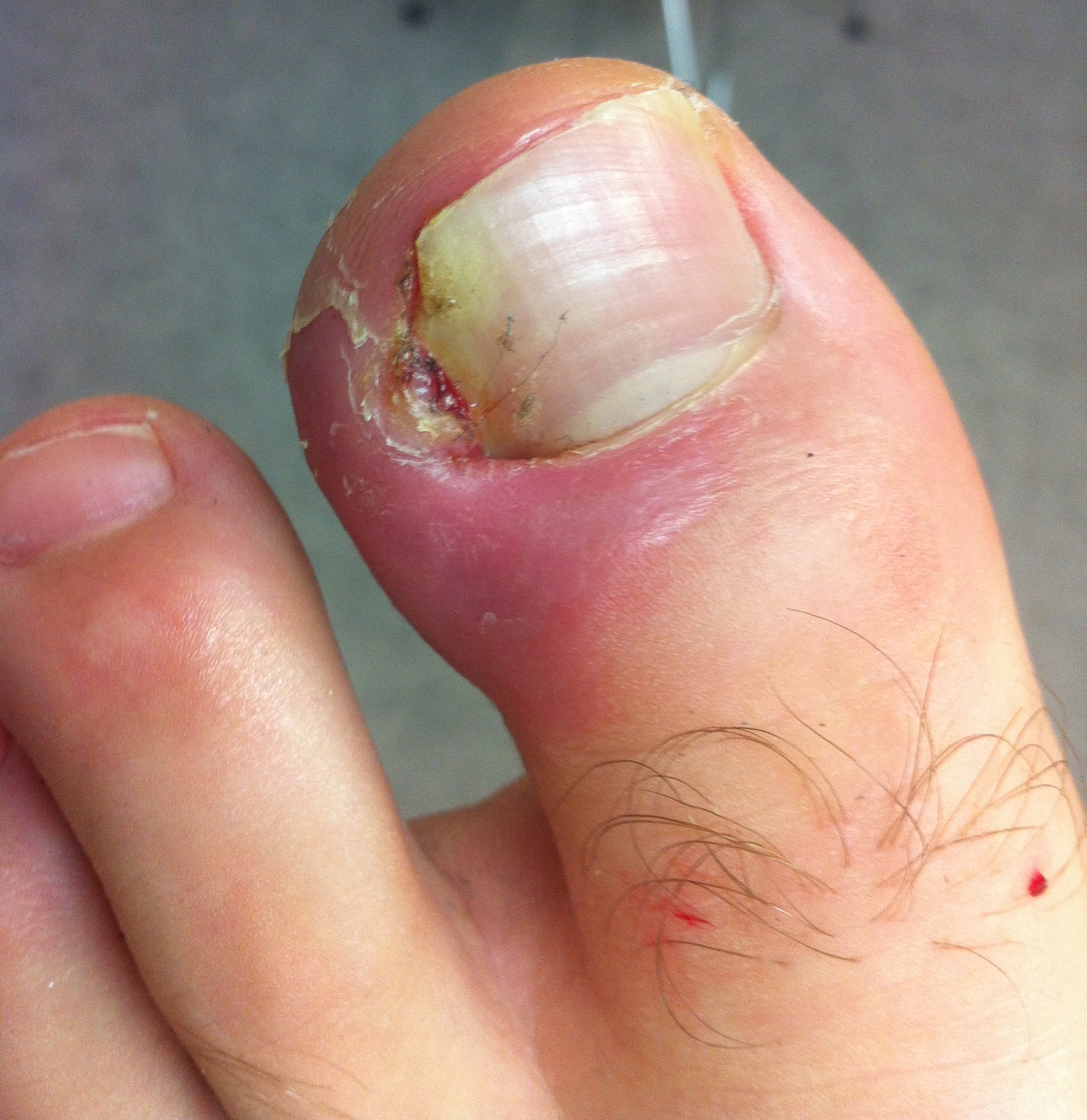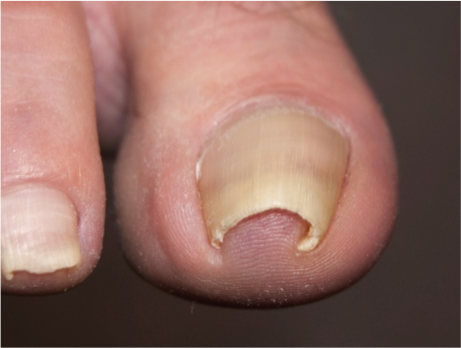Ingrown Toenails
Chronic Infected Onychocryptosis (Ingrown Toenail).
Ingrown toenails are a common problem where the edge or corner of a toenail grows into the soft flesh of the toe or sulcus. This can cause pain, swelling and infection. Ingrown toenails occur most commonly on the big toe (hallux) but can occur in any toenail (or fingernail!).
Ingrown toenails can sometimes settle on their own, however if the pain is sudden or severe or accompanied by redness, swelling or purulent exudate (pus), you should seek help from a podiatrist immediately to relieve the pain and to prevent worsening. If an ingrowing toenail keep reoccurring, this is another reason to seek help for a permanent solution.
Patients with diabetes or other vascular conditions that cause poor blood flow to your feet need to be extra careful as they are at greater risk of problems from ingrown toenails.
Symptoms
Ingrown toenail symptoms are usually:
Pain or tenderness in the toe along the side of the nail/s.
Redness surrounding your toenail
Swelling of your toe around the nail
Pus or infection of the skin surrounding the toenail
Mild Ingrown Toenail, without infection. This could be treated non-surgically.
Chronic Involuted (curled) toenail. Treatment will depend on symptoms and patient preference.
Ingrown toenail with purulent exudate (pus). This would require drainage and saline flush and surgical correction. Antibiotics are also necessary in some cases, however they are not useful on their own without removing the offending nail edge.
Chronic and Severe Ingrown Toenail with hypergranulation tissue. This sort of case usually requires surgical correction.
What causes ingrowing toenails?
These are the most common contributing factors to getting an ingrown toenail. One or several of these factors are always involved.
Wearing shoes that are too tight or squeeze the toes together
Cutting toenails incorrectly
Damage to the toenail from systemic conditions or fungal infection of the toenail
A one-off traumatic injury to the toe or toenail (dropping a heavy object on it) or a repetitive stress that damages the nail (such as long distance running/ soccer etc)
If ingrown toenails are common in your family, you are more likely to get one too. The inherited nail shape, or the shape of the underlying bone, can both predispose you to getting a ingrown toenail more easily.
Ingrown toenails are common in teenagers (possibly due to growing out of shoes quickly and wearing tighter shoe) , and in people over 50 (due to long term changes to the nail due to aging).
When to get help?
If you have a painful ingrown toenail, we can immediately remove the offending edge of nail and get rid of the pain. If you have a more severe case, we have minor operations we can perform to remove the nail edge and stop it from ever ingrowing again. The sooner you get in touch with us, the less invasive the solution may be.







